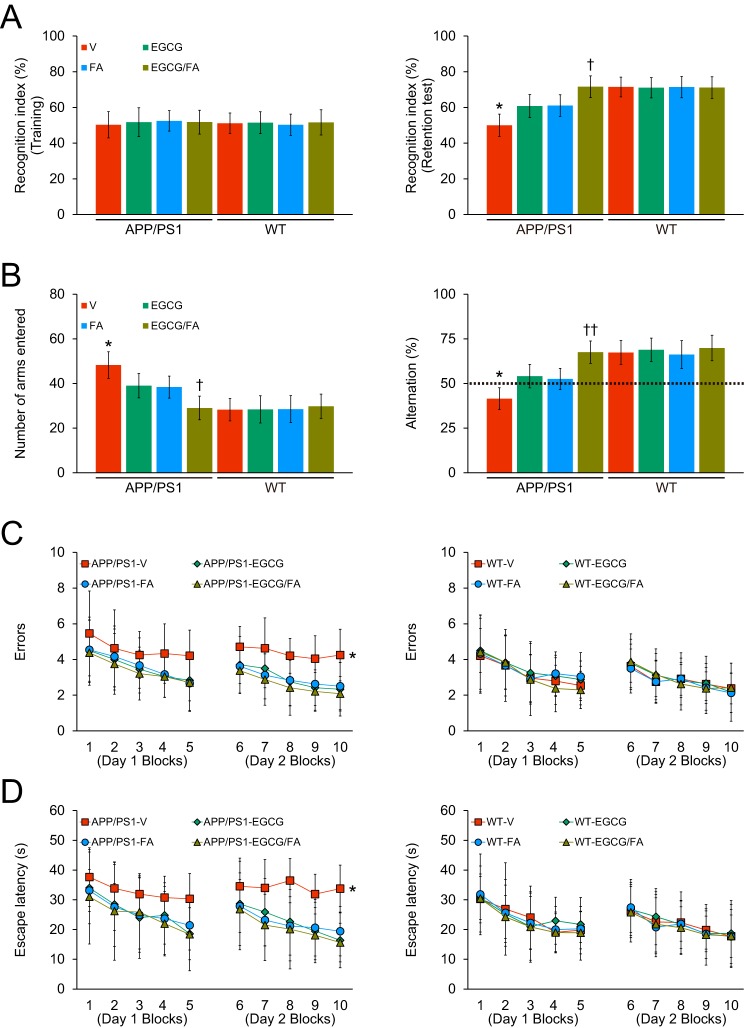Figure 1.
Reversal of transgene-associated behavioral impairment in APP/PS1-EGCG/FA mice. Data were obtained from APP/PS1 mice that received vehicle (APP/PS1-V, n = 8), EGCG (APP/PS1-EGCG, n = 8), FA (APP/PS1-FA, n = 8), or EGCG plus FA (APP/PS1-EGCG/FA, n = 8) and also WT mice that received vehicle (WT-V, n = 8), EGCG (WT-EGCG, n = 8), FA (WT-FA, n = 8), or EGCG plus FA (WT-EGCG/FA, n = 8) for 3 months after initial behavioral testing at 12 months of age. Data for A–D are presented as standard deviations of the means. All mice were tested in a comprehensive behavioral battery at 15 months. A, recognition index (%) in the novel object recognition test is shown for training (left) and retention (right) phases. B, Y-maze test data are represented as total arm entries (left) and spontaneous alternation (right). Two-day radial arm water maze test data are shown with five blocks per day for errors (C, left and right) and for escape latency (D, left and right). Statistical comparisons for A–D are between-groups. *, p < 0.05 for APP/PS1-V versus the other treated mice; †, p < 0.05; ††, p < 0.01 for APP/PS1-EGCG/FA versus APP/PS1-EGCG or APP/PS1-FA mice. V, vehicle.

